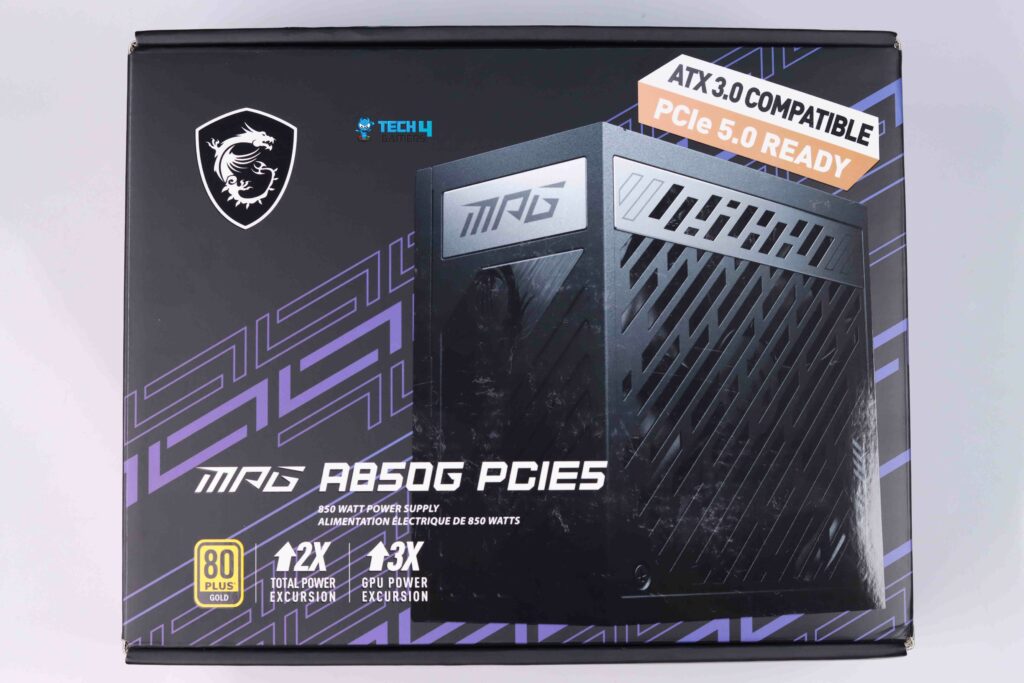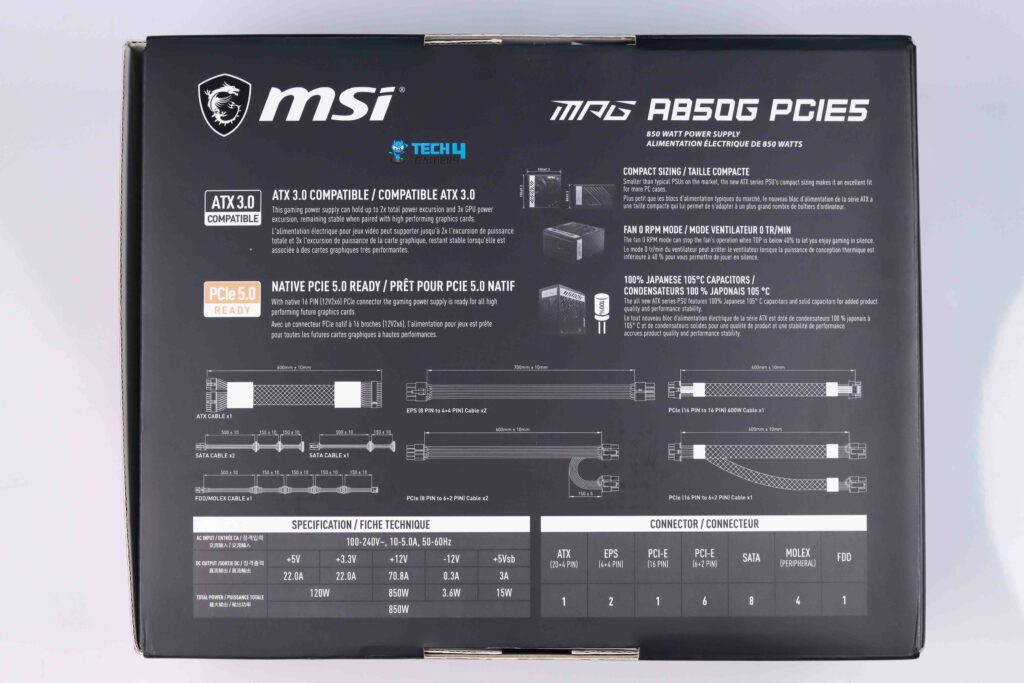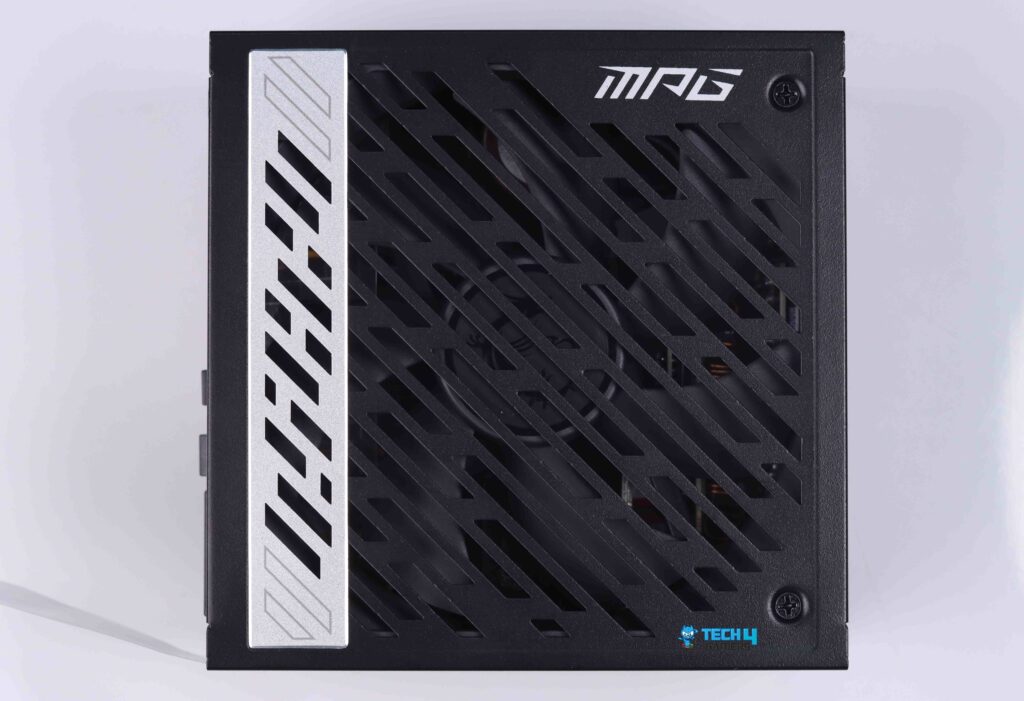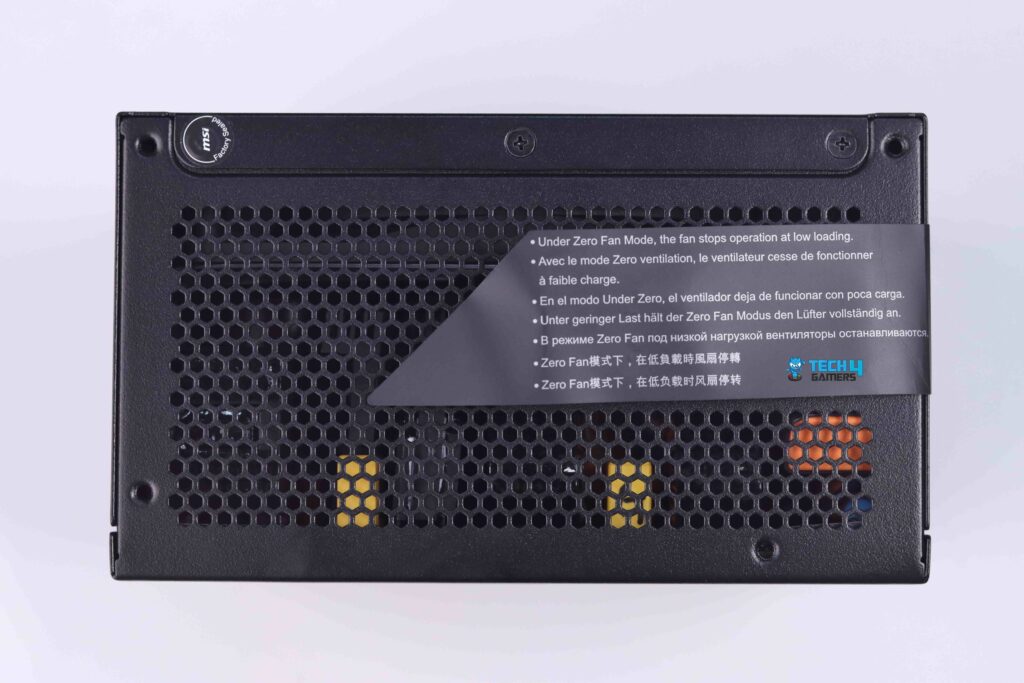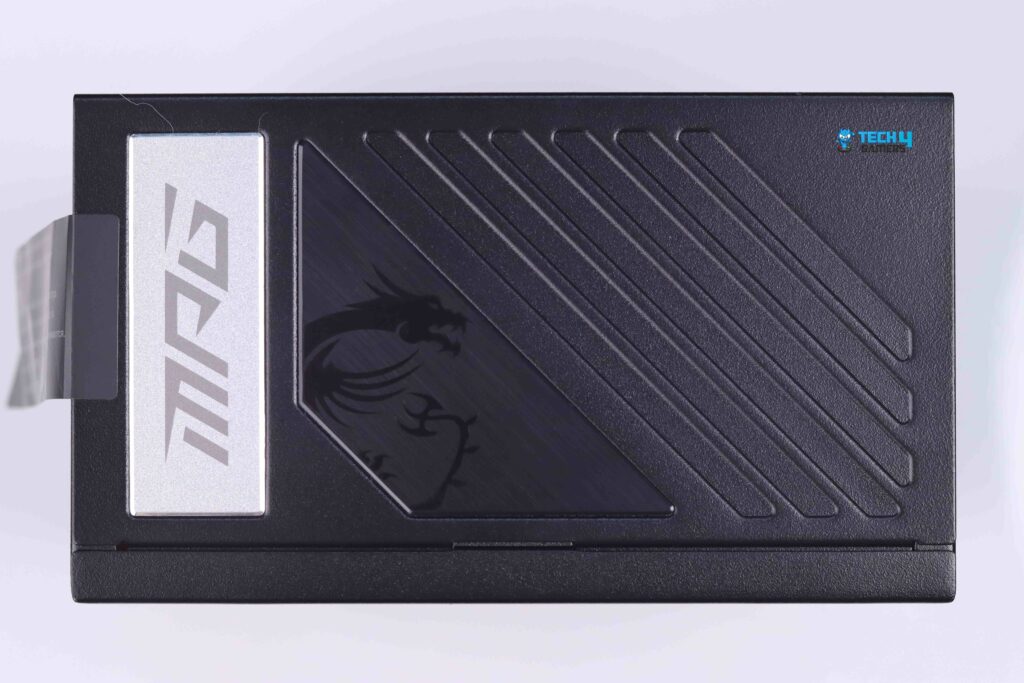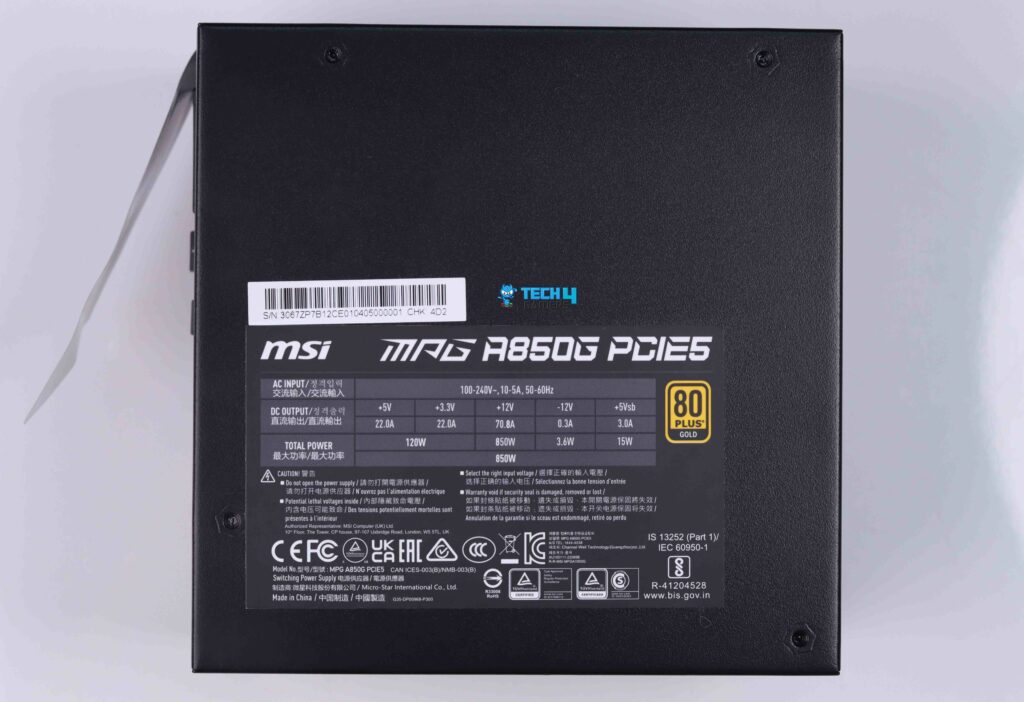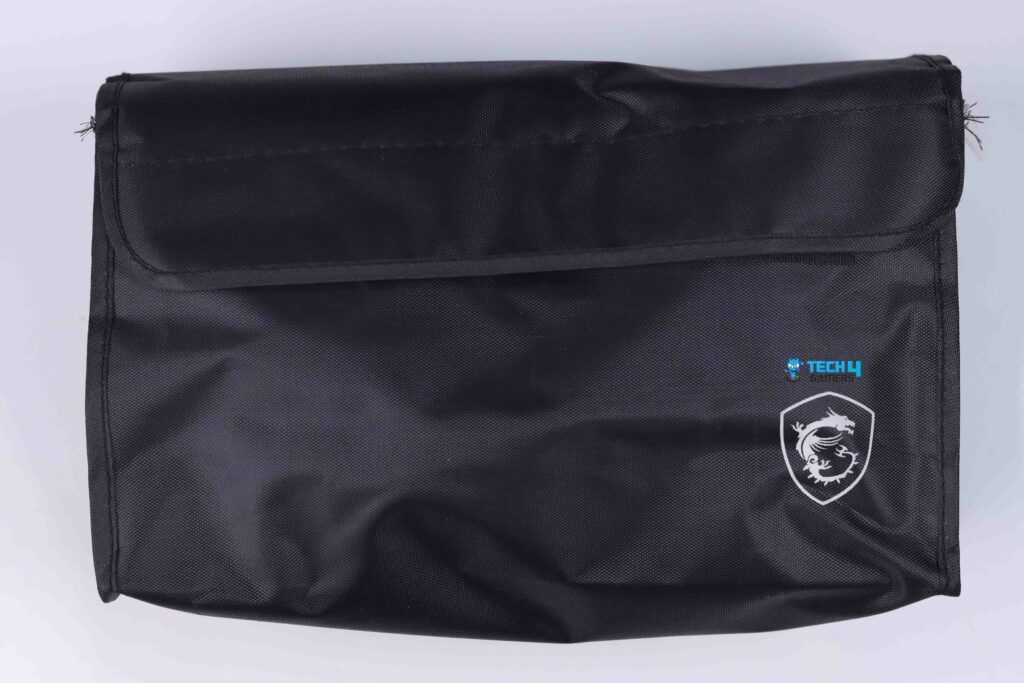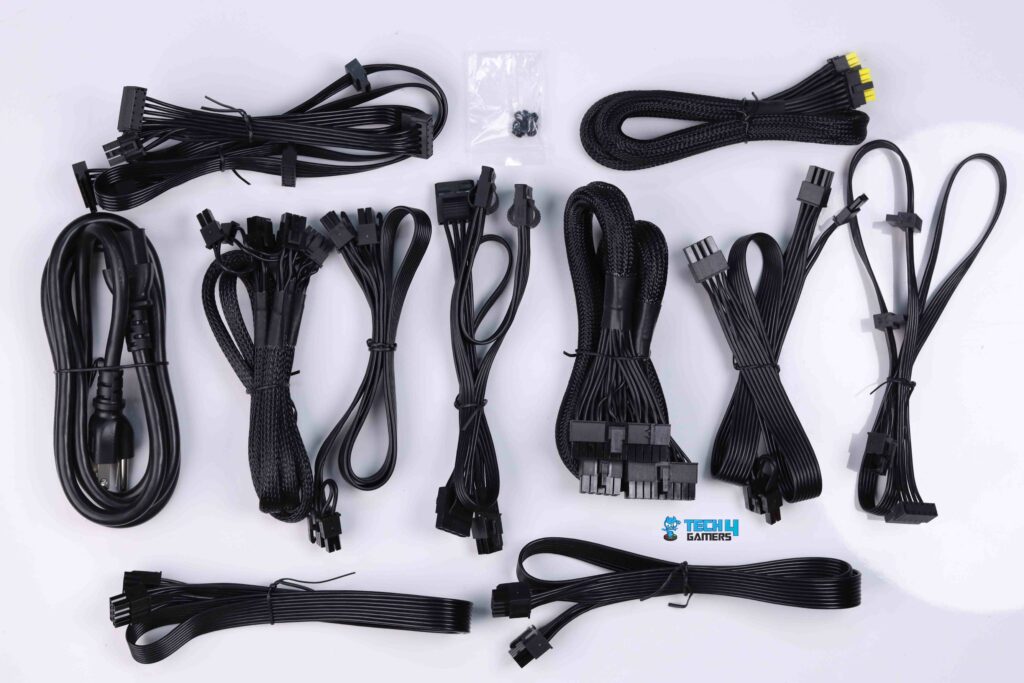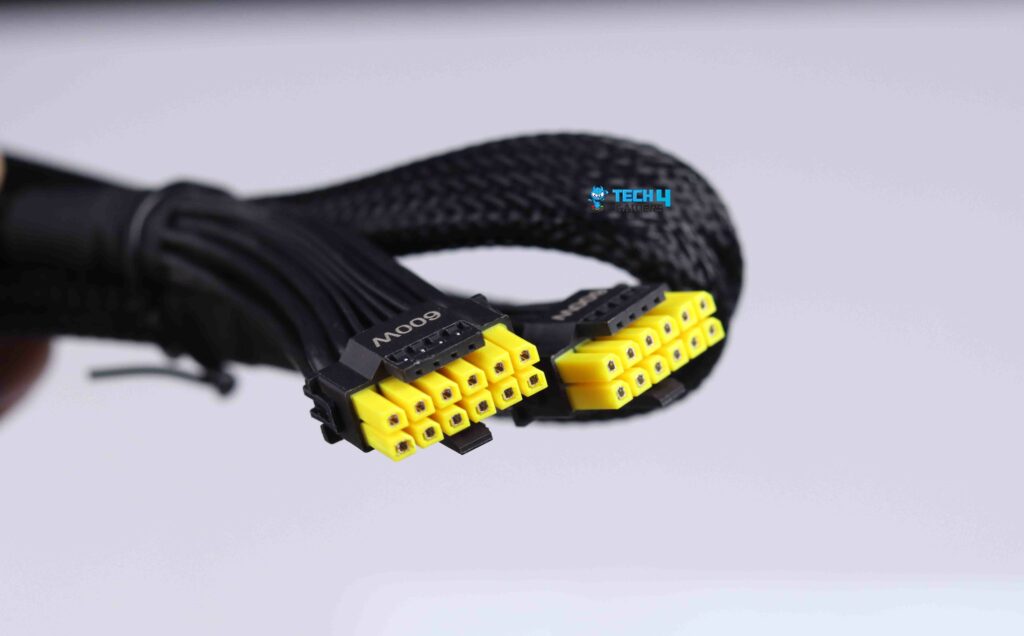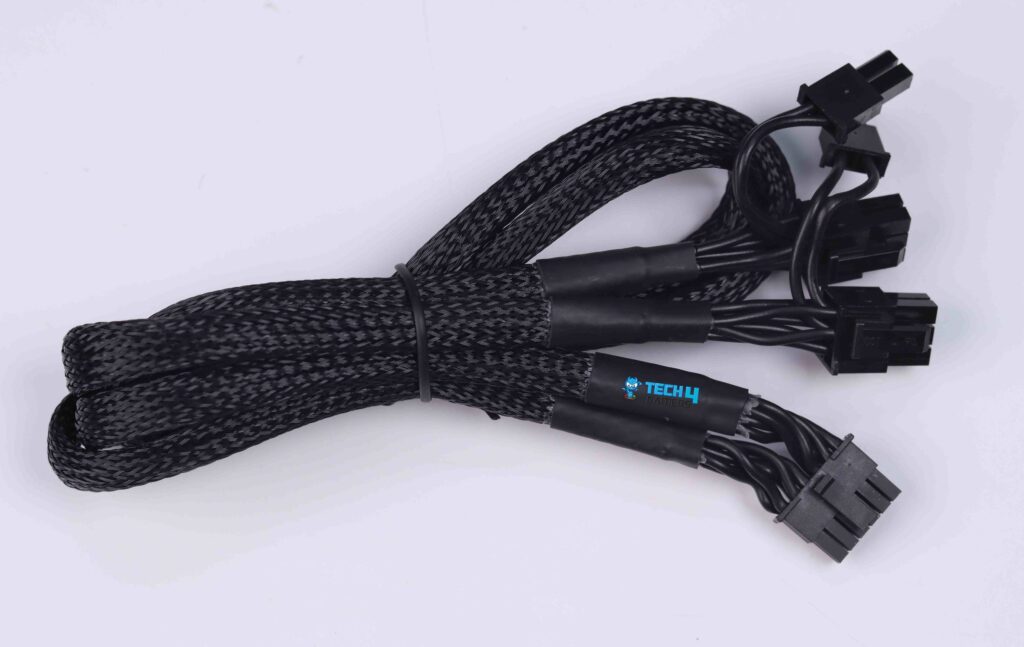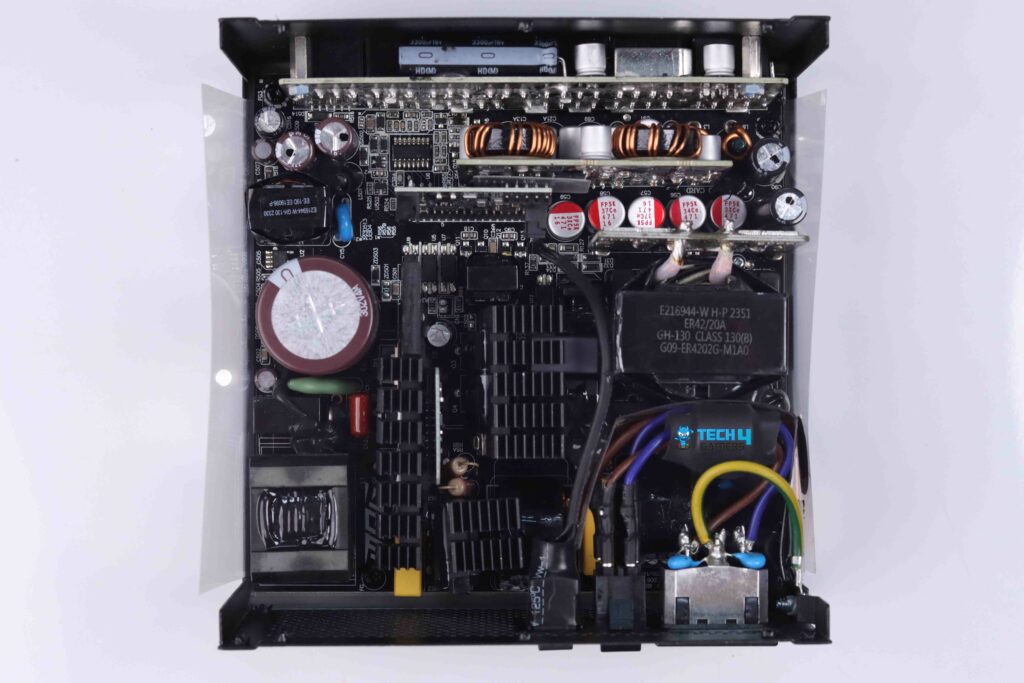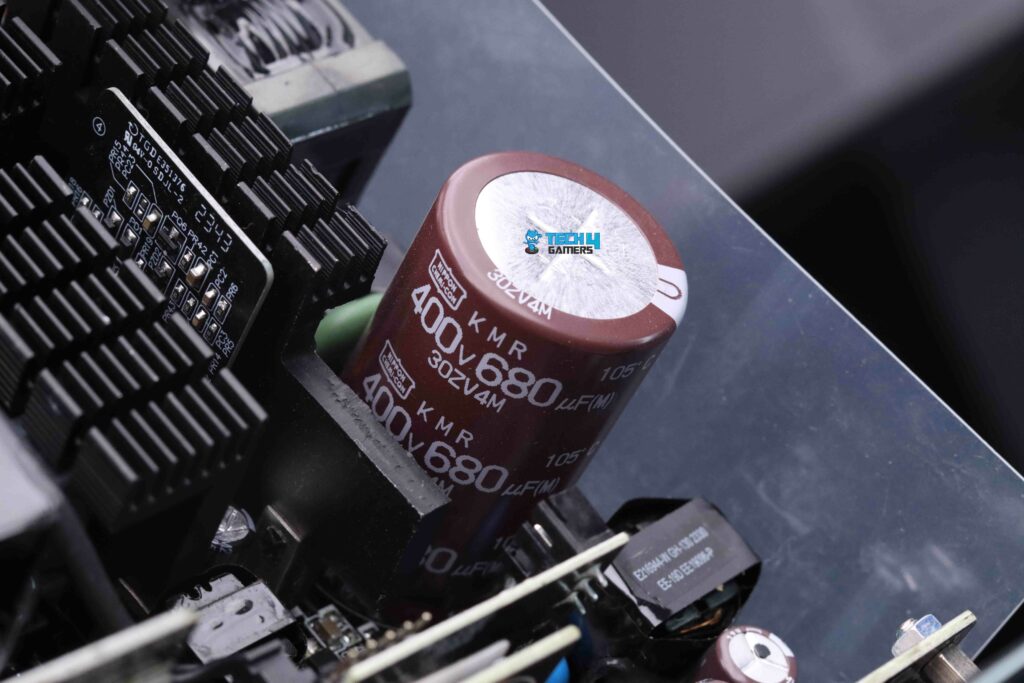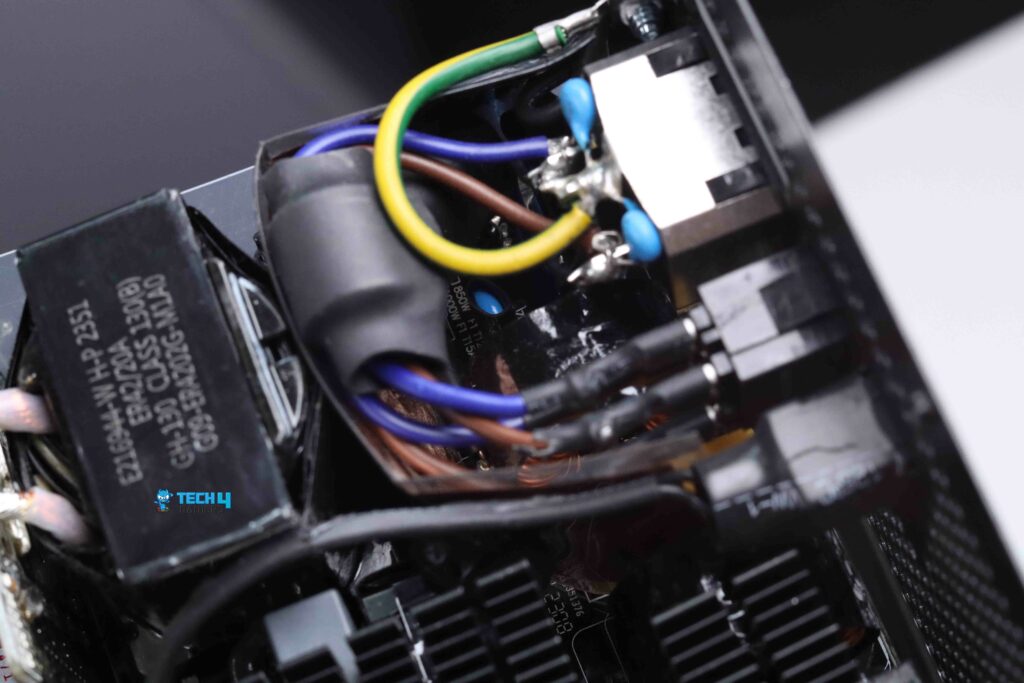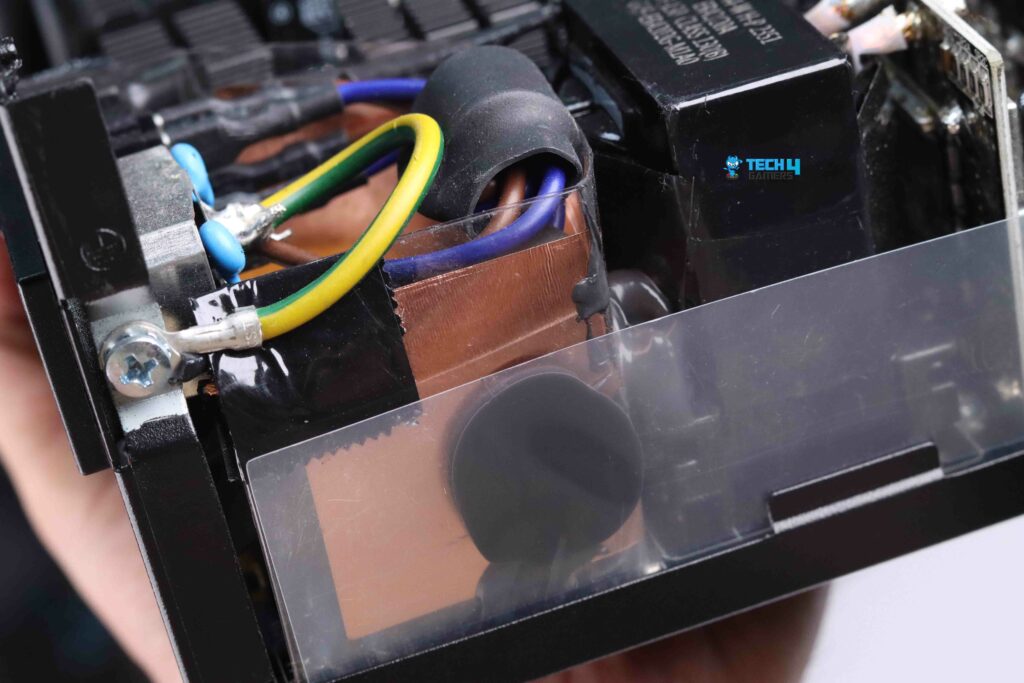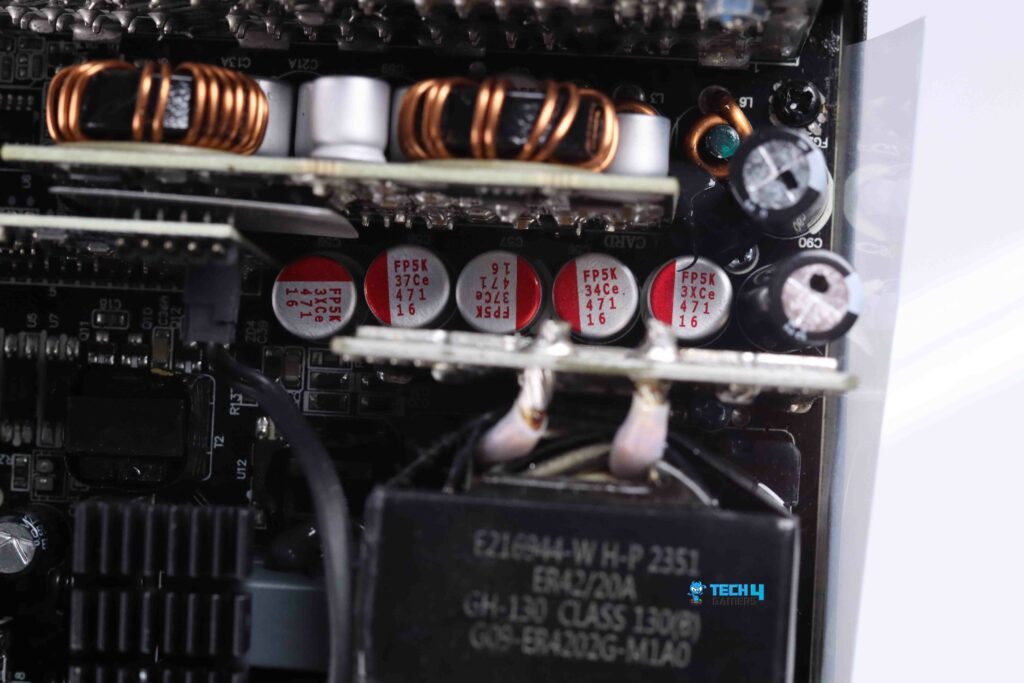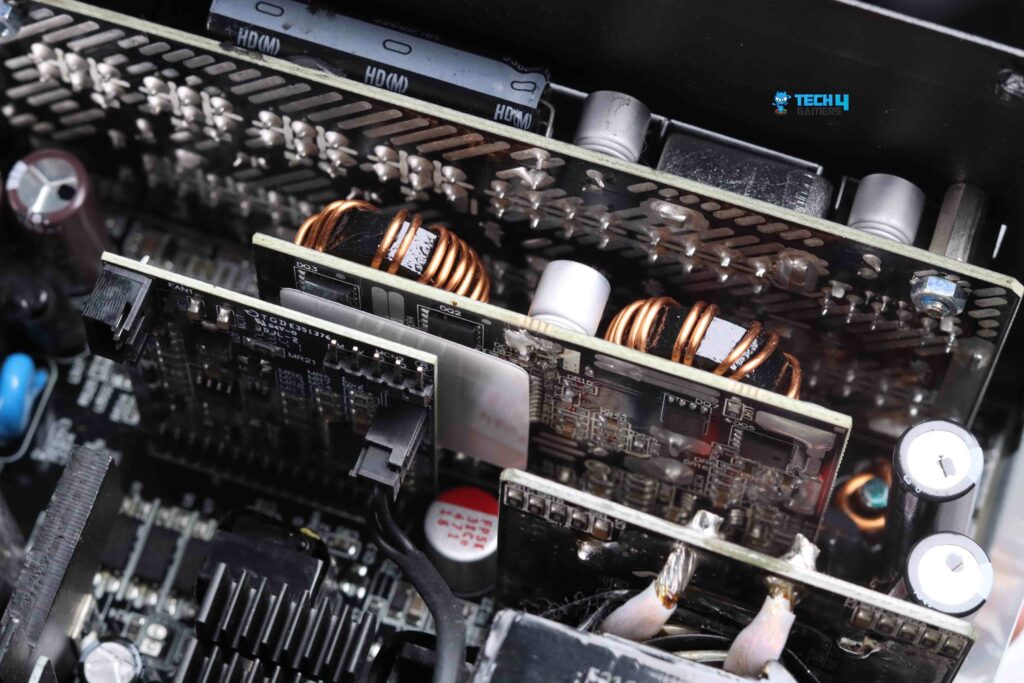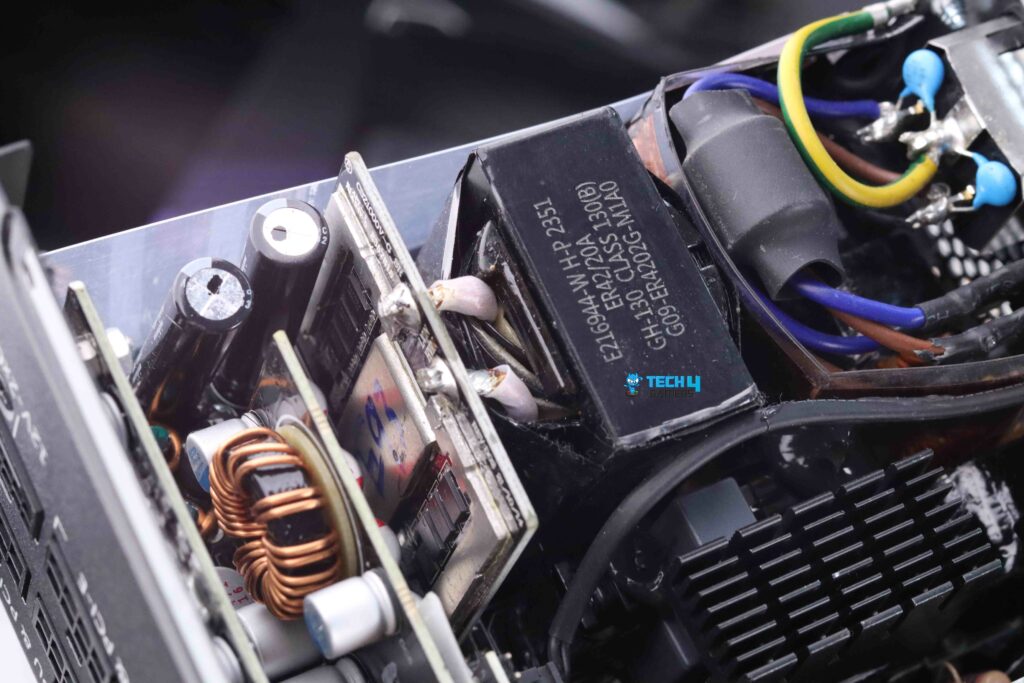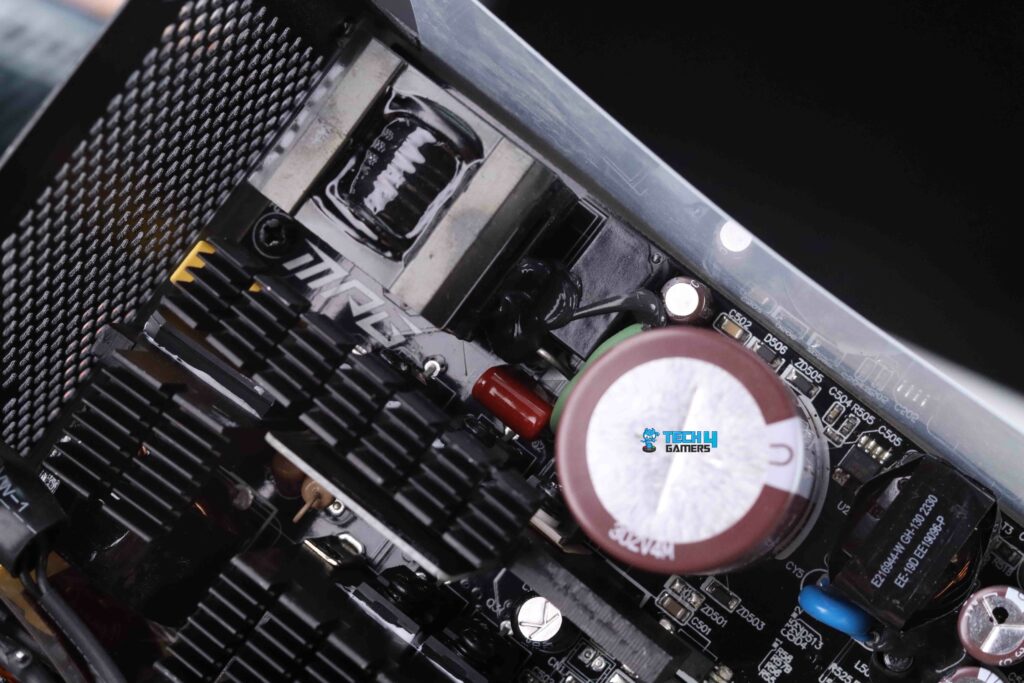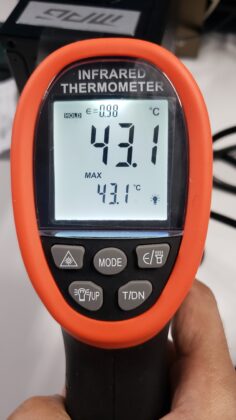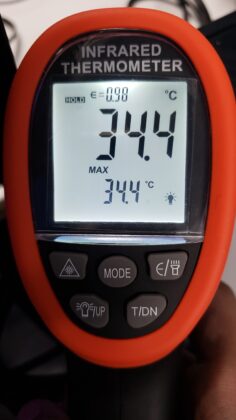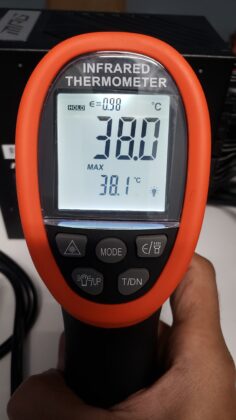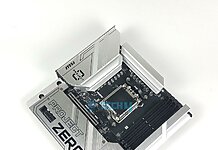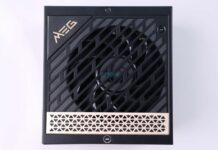A Balanced Powerhouse!
Review Summary
The MSI MPG A850G PCIE5 PSU is a compelling option that balances performance, reliability, and aesthetics. While the $199 price tag may seem somewhat steep compared to similar PSUs, the MSI MPG A850G PCIE5 justifies its cost with a 10-year warranty, high-quality Japanese capacitors, along with other features, makes it a worthwhile investment for users looking for a high-quality, future-proof PSU for their gaming PCs.
Hours Tested: 8
Overall
-
Value - 9/10
9/10
-
Build Quality - 9/10
9/10
-
Performance - 9/10
9/10
-
Efficiency - 9.5/10
9.5/10
Pros
- Efficiency
- Quality Components
- Modular Design
- Fan Performance
Cons
- Fan Noise
- Compatibility
When CWT released its ATX 3.0 platform, MSI was among the first manufacturers to adopt it. They were quick to accept the new platform to grab the early market share, and they succeeded. Initially, they were the first brand on the scene with the PCIe 5.0 series, which improved upon their previous PSUs and used the new design. Therefore, we are looking at the MSI MPG A850G 850W from the MPG series, which is a little more budget-friendly for today’s review.
Key Takeaways
- The MSI MPG A850G 850W PCIE5 is a compelling option for gamers and PC enthusiasts who seek a balance of performance, reliability, and aesthetics. It is one of the top contenders in the mid-to-high-tier PSU market.
- You should buy it if you are building an average gaming PC and appreciate user-friendly features.
- You should not buy it if you want to use high-end GPUs like the RTX 4090, which are constrained by budget considerations.
Here are the specifications:
| EFFICIENCY RATING | 80 PLUS Gold (up to 90%) |
| MODULAR | Yes (full modular) |
| FAN SIZE | 135 mm |
| FAN BEARING | Fluid Dynamic Bearing |
| DIMENSIONS (DxWxH) | 150 x 150 x 86 mm |
| PFC TYPE | Active PFC |
| INPUT VOLTAGE RANGE | 100-240 |
| POWER WATT | 850W |
| POWER EXCURSION | 1700W (*up to 200% of the PSU’s rated power for 100μs) |
| INPUT FREQUENCY RANGE | 50~60 Hz |
| PROTECTION | OCP / OVP / OPP / OTP / SCP / UVP |
Packaging & Unboxing
I received the MSI MPG A850G 850W in a strong cardboard box with simple geometric designs printed on it. While the front of the box features only a picture of the MSI MPG A850G 850W, the sides and back provide plenty of information. To ensure safe transportation, the MSI MPG A850G 850W is well-packed with soft wrapping foam inside the box.

The MSI provided an AC power cord and four black mounting screws, which are the only box contents of the MPG A850G PCIE package. This PSU does not come with any extra accessories whatsoever.
Design
MPG PSUs are available in a wide variety of distinct designs and color schemes. The MPG series uses a unique chassis with geometrical shapes engraved onto it. The style is identical to the MEG series. However, there are some subtle differences. For example, the MPG’s geometrical decorative elements are different.
Instead of triangles, they’re rectangular, and the golden accents are now silver. Not to mention how well-thought-out this PSU’s grill is. Thanks to its modular design, the PSU can be effortlessly connected using only the needed connections. All DC power cables, including the 24-pin ATX connection, can be easily removed. Consequently, this streamlines the system’s build and drastically cuts down on cable clutter.
Its compact design also makes it an excellent match for most computer cases. The PSU is 150 mm long, just above the ATX standard, but still short enough to work with except for the smallest ATX-compliant cases. On the otherwise ordinary top side of the PSU, you’ll find a sticker that contains the PSU’s electrical certifications and technical specifications.
The PSU’s sides have elegant black and silver metallic panels that can be magnetically connected and turned to fit the installation position of the PSU. There is a latching button to press that controls the “zero-fan mode” on the unit’s backside, adjacent to the AC power connector and the standard on/off switch.
Cable & Connectors
These are the cables that are provided with this PSU:
- ATX Cable x1
- PCIe (16 PIN to 6+2 PIN) Cable x1
- PCIe (8 PIN to 6+2 PIN) Cable x2
- PCIe (16 PIN to 16 PIN) Cable x1
- EPS (8 PIN to 4+4 PIN) Cable x2
- SATA Cable x2 / SATA Cable x1
- MOLEX/FDD Cable x1
Thanks to its flat, black design, wire management is a breeze. Generally, the system can be built better with flat wires, and airflow can be better managed. All the cables I have seen come with different PSUs. They are the easiest ones to manage.
Normally, when you insert the cable into its connector, you feel a certain force. However, these cables were easily plugged into the connectors on both sides, particularly on the PSU and my load tester. Surprisingly, the cable design is quite satisfactory. The latching and inserting force was relatively easy. I would advise you to keep the extra wires in the included bag and only use the ones you’ll need.
One notable improvement over the original 12VHPWR cable is the inclusion of yellow borders to indicate when the connector is completely inserted, which helps prevent melted connections.
I like that they went to such lengths to reduce the possibility of user mistakes and make sure customers insert the connection correctly. It will be immediately apparent when the user will connect the connections correctly. There is currently no manufacturer that offers this functionality. Lastly, they also provided an adapter cable for !2VHPWR and support for the legacy connector, which is quite rare to see.
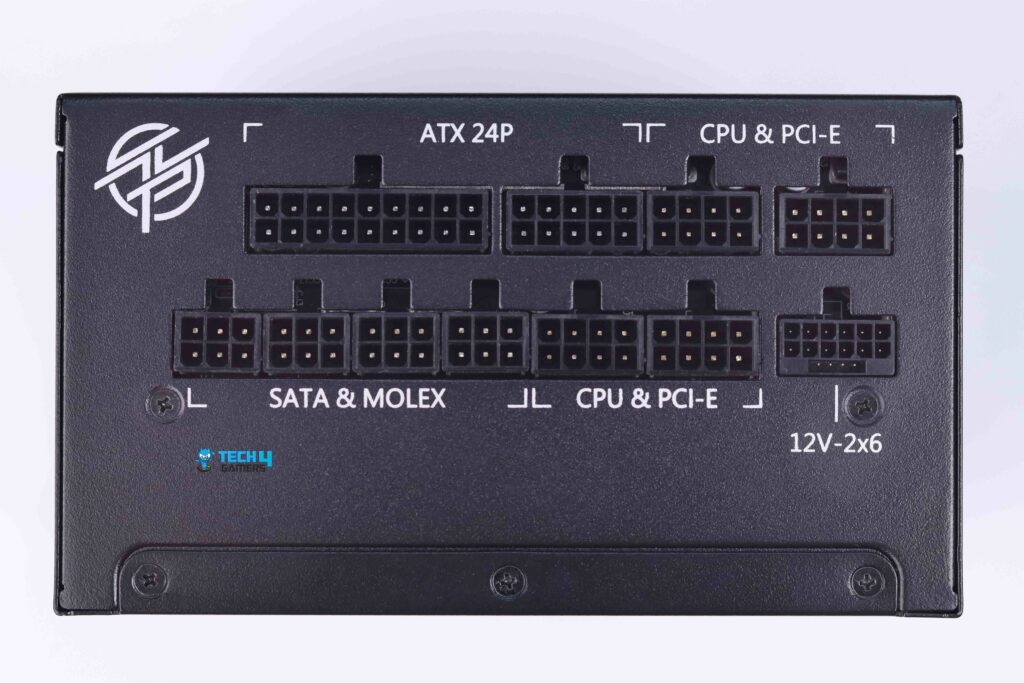
Here is the list of all connectors:
| Connectors | Quantity |
| ATX(20+4 PIN) | 1 |
| EPS(4+4 PIN) | 2 |
| PCI-E(6+2 PIN) | 6 |
| PCI-E(16 PIN) | 1 |
| SATA | 8 |
| MOLEX(PERIPHERAL) | 4 |
| FDD | 1 |
Fan

The MPG A850G PCIE5 uses a 135 mm fan from the well-known Hong Hua brand, which is used in high-quality PSUs. An extremely high-speed fan, considering its size, the HA13525H12SF-Z can reach 2300 RPM, which is more than enough to cool the MPG A850G PCIE5. It gets its power from a fluid dynamic bearing (FDB). It not only reduces noise but also extends the life of the fan. Notably, this PSU has a hybrid fan mode. As the name indicates, this mode enables passive operation when the PSU’s load is low.
It can automatically turn off when the TDP drops below 40% to preserve energy and make it quieter. If you don’t want the hybrid fan mode enabled by default, you can disable it by hitting the button. This is a technology that many manufacturers presently use. Disabling it will result in the fan spinning constantly while the PSU is switched on. Nonetheless, its speed can still be regulated thermally. Overall, the operations were quite quiet, and the fan speed was hardly audible.
Teardown & Component Analysis
CWT is the OEM that built the MPG A850G PCIE5. As well as being the OEM of MSI’s premium MEG series, CWT is well-known for its mid-to-high-performance PSUs. Notably, several PSUs with a comparable power output have used this platform in recent years. Unlike the MEG series, the MPG A850G PCIE5 seems to be an improved version among the most popular CWT platforms.
Regarding MSI PSUs, CWT has always been the go-to OEM. Unfortunately, OEMs had little time to change according to the newest ATX criteria because of Intel’s recent ATX3.0 specifications. Nonetheless, by making minor design adjustments, CWT has accomplished an incredible job of enhancing its current platforms and making its PSU ATX3.0 compliant.
The A850G follows in the footsteps of CWT’s enhanced platform, which is ATX3.0 compliant and has a 12VHPWR connection to accommodate the newest GPUs from Nvidia. As expected from a current, gold-rated PSU, the main side uses active PFC, half-bridge, and an LLC topology. On the secondary side, we find synchronous rectifying for 12V and DC-DC converters for minor 5V and 3.3V rails. As a whole, the components are well-chosen.
All of the Polymer capacitors and the primary and secondary bulk capacitors are of the highest quality. MSI has chosen to use capacitors made in Japan by Nippon Chemicon. The primary-side high-voltage transformer uses a direct connection with a vertical PCB with 12V rail MOSFETs attached to it to produce 12V on the secondary side. Thanks to this vertical PCB configuration, the MOSFETs will have plenty of space to stay cool while operating, which increases efficiency.
PSU Load Testing
12V & Minor Voltage Rails Regulation
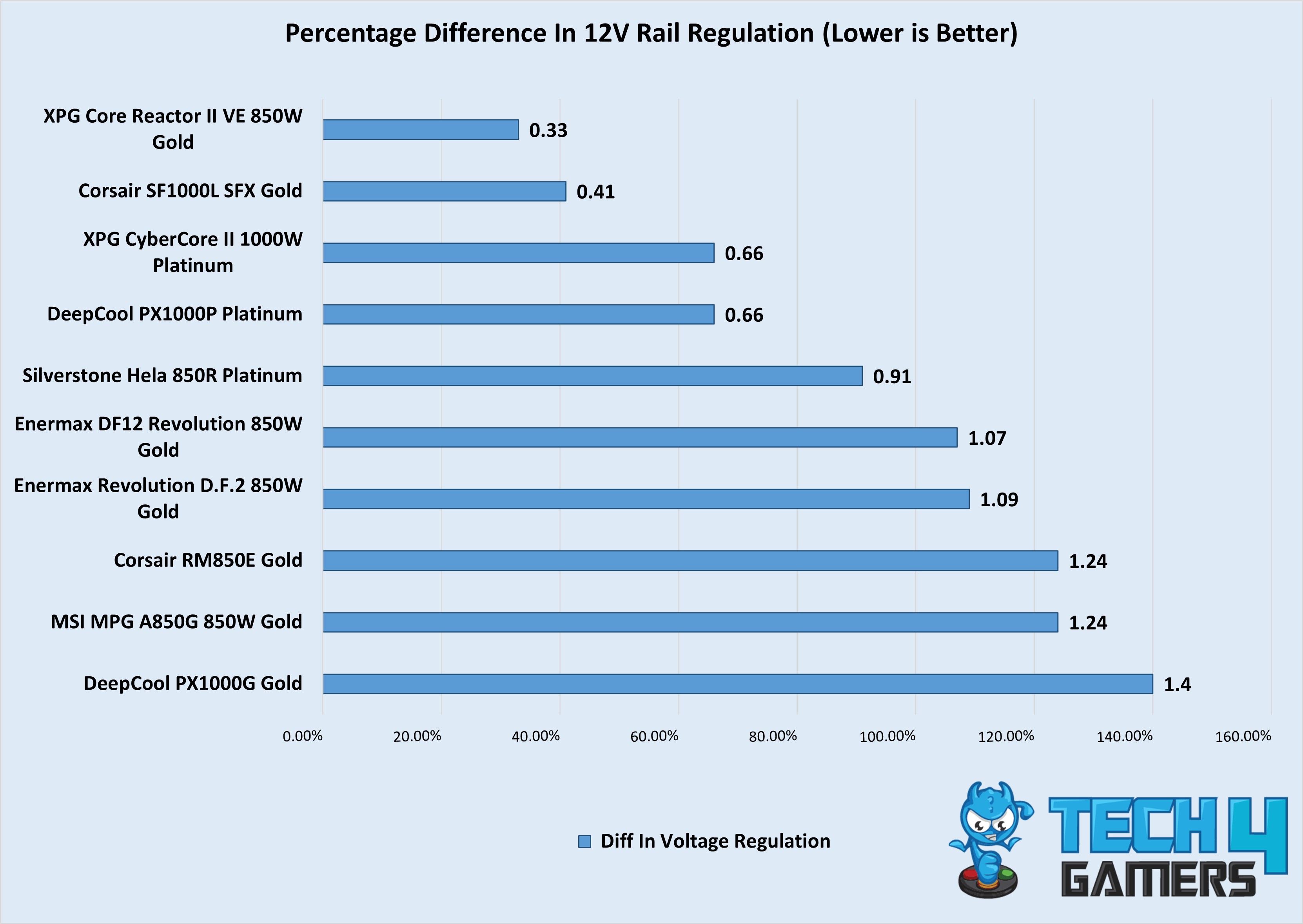
| Load in % | 12V | 5V | 3.3V |
| 20% | 12.10V | 5.06V | 3.30V |
| 50% | 12.02V | 5.05V | 3.30V |
| 70% | 11.99V | 5.05V | 3.29V |
| 90% | 11.96V | 5.04V | 3.28V |
| 100% | 11.95V | 5.04V | 3.28V |
The MSI MPG A850G 850W PCIE5 performed somewhat better than I expected. It provides very stable power with almost no voltage dips or spikes over the whole load range. Regarding the results, this CWT’s platform is highly capable of voltage regulation since it is very tight.
PSU Efficiency
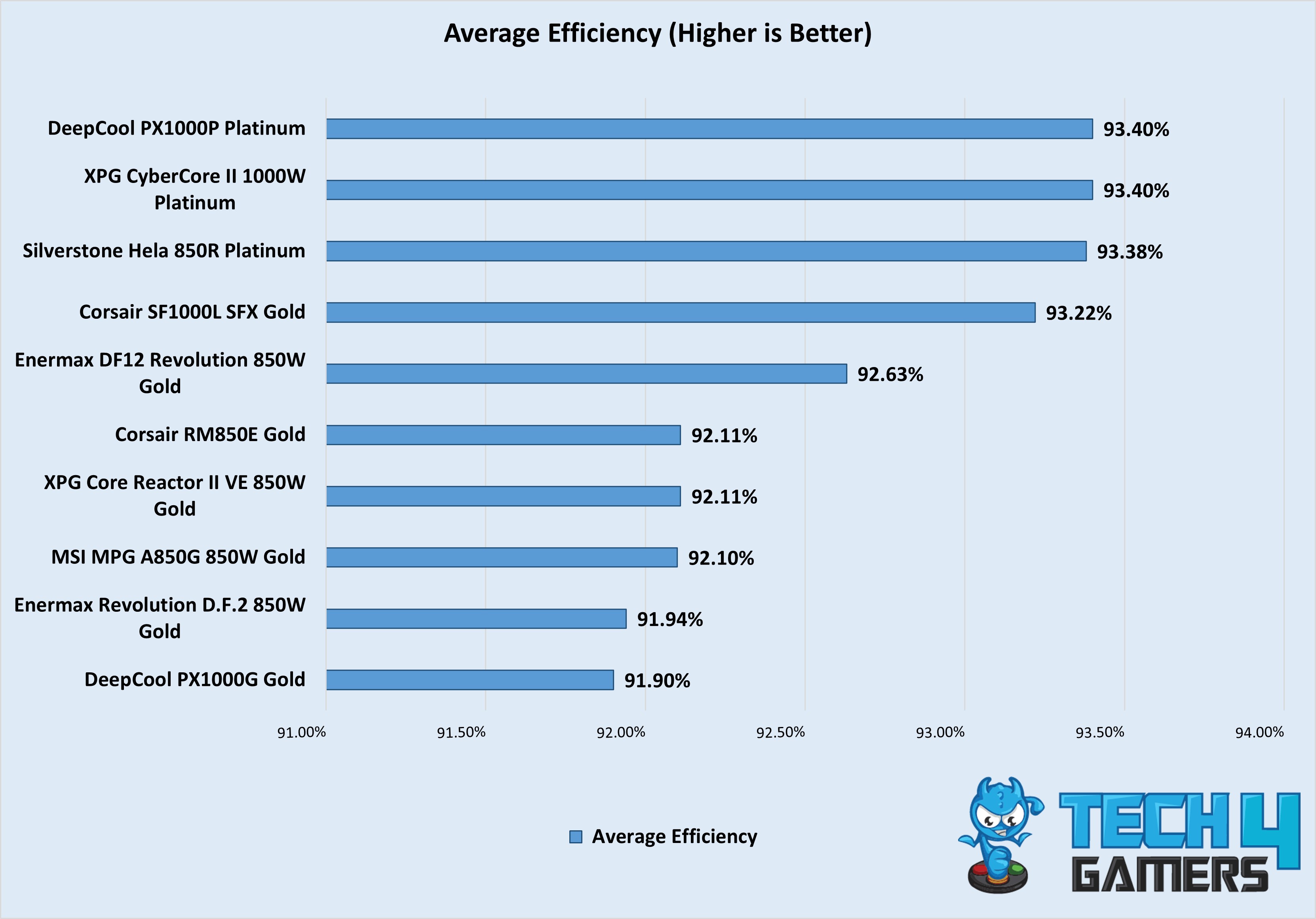
| Load in % | Power Factor | Efficiency |
| 20% | 0.949 | 91.34% |
| 50% | 0.983 | 93.03% |
| 70% | 0.988 | 92.67% |
| 90% | 0.99 | 92.05% |
| 100% | 0.991 | 91.39% |
The 80 Plus Gold certification allows for maximizing efficiency while decreasing energy usage. You can be certain that the energy conversion efficiency is top-notch at low loads but somewhat decreases at heavy loads. Since this PSU’s output power is 850W, it is a well-tuned platform that has achieved good efficiency. Therefore, its efficiency is much better than that of comparable PSUs in the market.
Voltage Ripple Performance
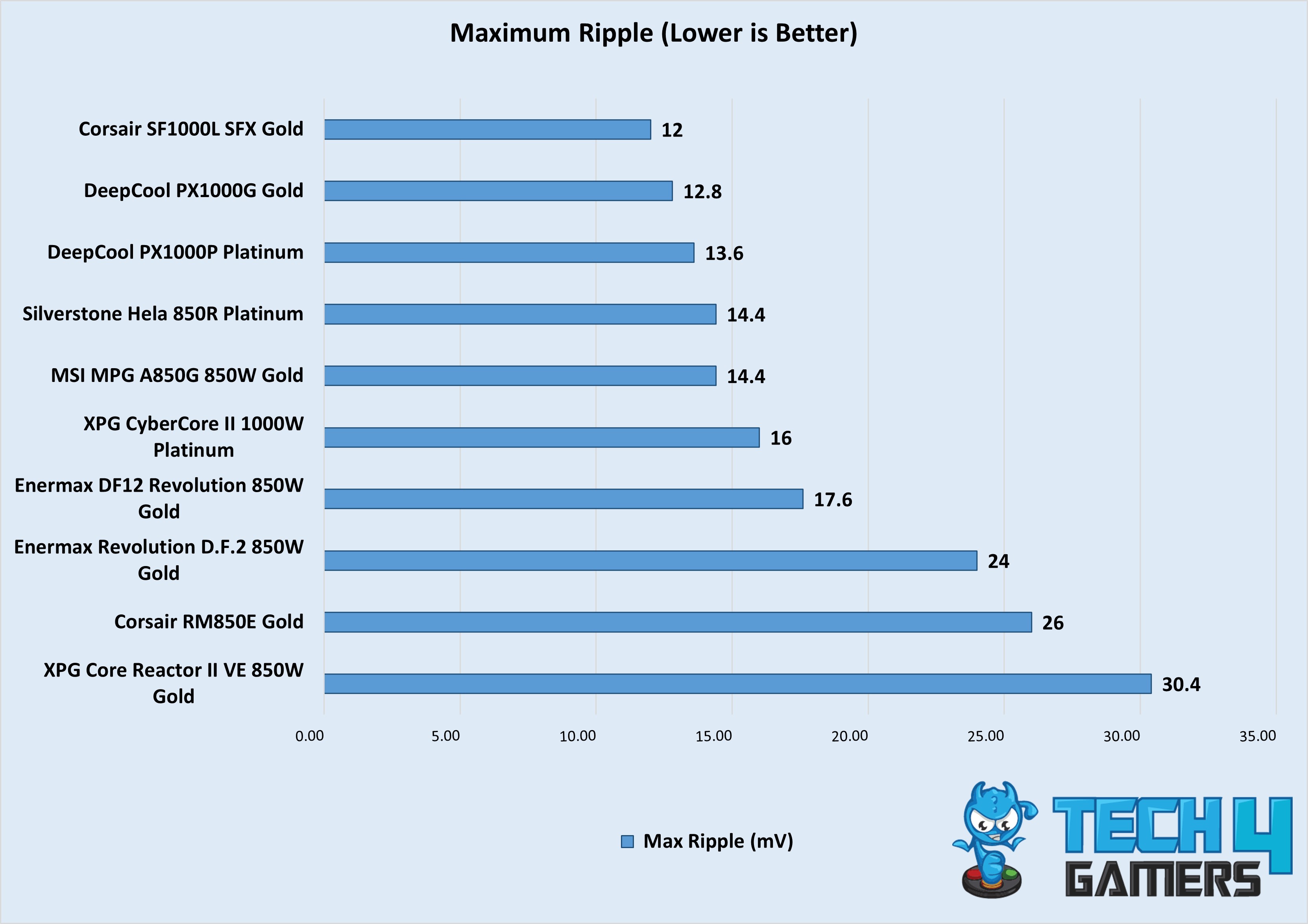
| Load in % | Voltage Ripple |
| 20% | 10mV |
| 50% | 12mV |
| 70% | 13.6mV |
| 90% | 14mV |
| 100% | 14.4mV |
As I have said occasionally, it feels like CWT’s latest platform is ripple-free. Since it has unparalleled ripple performance. It is well capable of handling extreme requirements of overclocking systems.
Power meets perfection!
Temperatures
It has a very low operating temperature, which is great for the durability of any design like this. The aggressive cooling strategy serves to keep the operating temperatures extremely low but also causes the MPG A1000G PCIE5 to run noisy when confronted with heavy loads.
12VHPWR Cable Performance On Max Load
At 11.86V, the 12VHPWR cable had no troubles with a 600W load.
Should You Buy it?
Buy it if
✅You are building a mid-range gaming PC: The MSI MPG A850G 850W PCIE5 offers ample power for typical gaming setups, providing reliable performance and efficiency for systems with mid-range GPUs like the RTX 4070 Ti Super.
✅You appreciate user-friendly features: The PSU’s modular design and intuitive cable connections minimize the risk of errors during installation, ensuring a hassle-free build experience.
Don’t Buy it if
❌You plan to use high-end GPUs like the RTX 4090: While the A850G offers sufficient power for most gaming setups, users intending to pair it with future high-power GPUs may find the 850W capacity limiting. Opting for the 1000W variant of the MPG series would provide a more suitable power supply for such configurations.
❌You are constrained by budget considerations: With a retail price of $199, the A850G may be priced higher than other PSUs offering similar specifications. If budget is a concern, users may find more cost-effective options elsewhere.
Final Verdict
MSI has every right to brag about the MPG A850G PCIE5’s quality. Every component in the PSU is of high quality, even if the topology is fairly straightforward and mid-range active components are used. Like with the previous platform, CWT performed a fantastic job with the layout design. Even though it’s crowded, there’s still room for a 135 mm fan. Moreover, the large heatsinks improve the PSU’s thermal performance and durability over time.
The MPG A850G PCIE5 is aimed at a market segment where consumers consider all factors, with pricing being among the most significant. When designing their new PSU, MSI wanted to convince customers that the MPG A850G PCIE5 could provide reliable performance. If not, it wouldn’t have the opportunity to succeed in the wider marketplace. If you’re looking for a robust PSU that can endure for years, the MSI MPG A850G 850W PCIE5 is a good, balanced option.
The ATX 3.0 compatibility implies that the PSU will not become outdated if the user upgrades to a GPU that uses a 12VHPWR connection in the future, even if buying one with it is not in the user’s immediate plans. Although the current retail price of $199 is somewhat more than ATX 3.0 compliant PSUs offering comparable specifications, it is still competitive enough to attract customers seeking a high-quality, future-proof PSU.
With its 10-year warranty and high-quality 100% Japanese capacitors, I can assure you that this power supply unit will continue to run smoothly and reliably for a long time. In addition, this PSU has many safeguards that work together to keep the system secure and safe at all times so that you can rest easy. However, to keep its market share, MSI must be vigilant. A plethora of competitive mid-to-high-tier ATX 3.0 PSUs are set to be released in the next weeks and months.
Coming Next: Enermax Revolution D.F.2 1200W Review
Thank you! Please share your positive feedback. 🔋
How could we improve this post? Please Help us. 😔
[Errors Troubleshooting Expert]
Arsalan Shakil (aka GuyThatDoesEverything on YouTube) is a PC Tech Enthusiast and Electronic Geek. With over 10+ years of experience in Electronics, he then decided to explore Software Engineering to design embedded products and automate existing hardware solutions.
When he started tearing down old cameras to understand how they worked, he was shocked (literally, when he got zapped by a flash discharge capacitor), giving him the power (debatable) to fall in love with videography/photography. He also started making some fun videos that later became YouTube tech reviews.
Skills:
- 10+ years of experience in Electronics design, embedded solutions, and prototyping
- Majored in Software Engineering
- Research paper publication in IEEE for Embedded Military Uniform & LoRa WAN wireless technology
- Specialized in IoT Solutions
- PC Enthusiast & PC Modder
In his local region, he’s known to expose cheap PSU brands, often claiming fake certification or false claims on the box. He’s a true nerd and needed some friends in his life. Then he met some guys who work at Tech4Gamers, and they also came out to be equal nerds who suggested he join Tech4Gamers as a Hardware Expert.


 Threads
Threads
